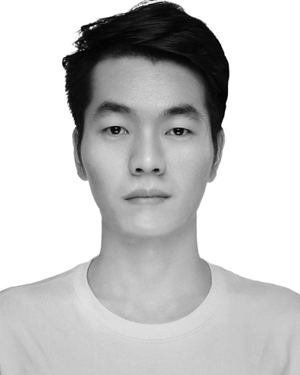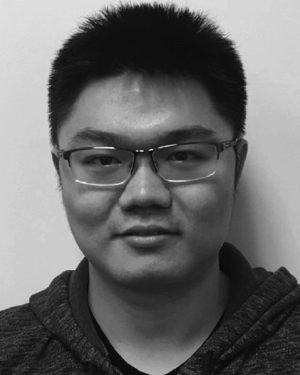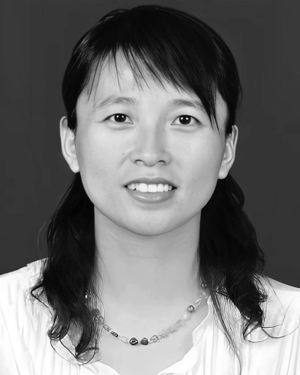Abstract:
Superpixel generation is increasingly an important area for computer vision tasks. While superpixels with highly regular shapes are preferred to make the subsequent proce...Show MoreMetadata
Abstract:
Superpixel generation is increasingly an important area for computer vision tasks. While superpixels with highly regular shapes are preferred to make the subsequent processing easier, the accuracy of the superpixel boundaries is also necessary. Previous methods usually depend on a distance function considering both spatial and color coherency regularization on the whole image, which however is hard to balance between shape regularity and boundary adherence, especially when the desired number of superpixels is small. In addition, non-adaptive parameters and insufficient contour information also affect the performance of segmentation. To mitigate these problems, we propose a robust divide-and-conquer superpixel segmentation method, of which the core idea is that we apply a new contour information extraction and a pixel clustering to separate the input image into flat and non-flat regions, where the former targets shape regularity and the latter emphasizes boundary adherence, followed by an efficient hierarchical merging to clean up tiny and dangling superpixels. Our algorithm requires no additional parameter tuning except the desired number of superpixels since our internal parameters are self-adaptive to the image contents. Experimental results demonstrate that for public benchmark datasets, our algorithm consistently generates more regular superpixels with stronger boundary adherence than state-of-the-art methods while maintaining a competitive efficiency. The source code is available at https://github.com/YunyangXu/HQSGRD.
Published in: IEEE Transactions on Circuits and Systems for Video Technology ( Volume: 33, Issue: 4, April 2023)
Funding Agency:

School of Software, Shandong University, Jinan, China
Yunyang Xu received the B.E. degree from the Department of Information Engineering, Hefei University of Technology, Xuancheng, China, in 2017. He is currently pursuing the M.E. degree with the School of Software, Shandong University, Jinan, China. His research interests include image segmentation and computer graphics.
Yunyang Xu received the B.E. degree from the Department of Information Engineering, Hefei University of Technology, Xuancheng, China, in 2017. He is currently pursuing the M.E. degree with the School of Software, Shandong University, Jinan, China. His research interests include image segmentation and computer graphics.View more

Computer Science Department, Florida State University, Tallahassee, FL, USA
Xifeng Gao received the Ph.D. degree from the Department of Computer Science, University of Houston, in 2016. He was a Post-Doctoral Researcher at the Courant Institute of Mathematical Sciences, New York University, for two years. He is currently an Assistant Professor with the Computer Science Department, Florida State University. He has wide research interests that are related to geometry, such as computer graphics, vis...Show More
Xifeng Gao received the Ph.D. degree from the Department of Computer Science, University of Houston, in 2016. He was a Post-Doctoral Researcher at the Courant Institute of Mathematical Sciences, New York University, for two years. He is currently an Assistant Professor with the Computer Science Department, Florida State University. He has wide research interests that are related to geometry, such as computer graphics, vis...View more

School of Software, Shandong University, Jinan, China
Shandong Co-Innovation Center of Future Intelligent Computing, Yantai, China
Caiming Zhang received the B.S. and M.S. degrees in computer science from Shandong University, Jinan, China, in 1982 and 1984, respectively, and the Ph.D. degree in computer science from the Tokyo Institute of Technology, Tokyo, Japan, in 1994. From 1998 to 1999, he was a Post-Doctoral Fellow with the University of Kentucky, Lexington, USA. He is currently a Professor with the School of Software, Shandong University, and ...Show More
Caiming Zhang received the B.S. and M.S. degrees in computer science from Shandong University, Jinan, China, in 1982 and 1984, respectively, and the Ph.D. degree in computer science from the Tokyo Institute of Technology, Tokyo, Japan, in 1994. From 1998 to 1999, he was a Post-Doctoral Fellow with the University of Kentucky, Lexington, USA. He is currently a Professor with the School of Software, Shandong University, and ...View more

Kuaishou Technology, Beijing, China
Jianchao Tan received the B.S. degree from the Electronic Engineering and Information Science Department, University of Science and Technology of China, in 2013, and the Ph.D. degree from the Computer Science Department, George Mason University, in 2019. He is currently a Staff Research Scientist at Kuaishou Technology, working for automated machine learning, computer graphics, and vision.
Jianchao Tan received the B.S. degree from the Electronic Engineering and Information Science Department, University of Science and Technology of China, in 2013, and the Ph.D. degree from the Computer Science Department, George Mason University, in 2019. He is currently a Staff Research Scientist at Kuaishou Technology, working for automated machine learning, computer graphics, and vision.View more

School of Software, Shandong University, Jinan, China
Xuemei Li received the master’s and Ph.D. degrees from Shandong University, Jinan, China, in 2004 and 2010, respectively. From 2013 to 2014, she was a Visiting Scholar at the University of Houston, USA. She is currently an Associate Professor with the School of Software, Shandong University, and a member of the GD&IV Laboratory. She is engaged in research on geometric modeling, CAGD, medical image processing, and informat...Show More
Xuemei Li received the master’s and Ph.D. degrees from Shandong University, Jinan, China, in 2004 and 2010, respectively. From 2013 to 2014, she was a Visiting Scholar at the University of Houston, USA. She is currently an Associate Professor with the School of Software, Shandong University, and a member of the GD&IV Laboratory. She is engaged in research on geometric modeling, CAGD, medical image processing, and informat...View more

School of Software, Shandong University, Jinan, China
Yunyang Xu received the B.E. degree from the Department of Information Engineering, Hefei University of Technology, Xuancheng, China, in 2017. He is currently pursuing the M.E. degree with the School of Software, Shandong University, Jinan, China. His research interests include image segmentation and computer graphics.
Yunyang Xu received the B.E. degree from the Department of Information Engineering, Hefei University of Technology, Xuancheng, China, in 2017. He is currently pursuing the M.E. degree with the School of Software, Shandong University, Jinan, China. His research interests include image segmentation and computer graphics.View more

Computer Science Department, Florida State University, Tallahassee, FL, USA
Xifeng Gao received the Ph.D. degree from the Department of Computer Science, University of Houston, in 2016. He was a Post-Doctoral Researcher at the Courant Institute of Mathematical Sciences, New York University, for two years. He is currently an Assistant Professor with the Computer Science Department, Florida State University. He has wide research interests that are related to geometry, such as computer graphics, visualization, multimedia processing, robotics, and digital fabrication. He has won the Best Ph.D. Dissertation Award from the Department of Computer Science, University of Houston.
Xifeng Gao received the Ph.D. degree from the Department of Computer Science, University of Houston, in 2016. He was a Post-Doctoral Researcher at the Courant Institute of Mathematical Sciences, New York University, for two years. He is currently an Assistant Professor with the Computer Science Department, Florida State University. He has wide research interests that are related to geometry, such as computer graphics, visualization, multimedia processing, robotics, and digital fabrication. He has won the Best Ph.D. Dissertation Award from the Department of Computer Science, University of Houston.View more

School of Software, Shandong University, Jinan, China
Shandong Co-Innovation Center of Future Intelligent Computing, Yantai, China
Caiming Zhang received the B.S. and M.S. degrees in computer science from Shandong University, Jinan, China, in 1982 and 1984, respectively, and the Ph.D. degree in computer science from the Tokyo Institute of Technology, Tokyo, Japan, in 1994. From 1998 to 1999, he was a Post-Doctoral Fellow with the University of Kentucky, Lexington, USA. He is currently a Professor with the School of Software, Shandong University, and a Distinguished Professor with the School of Computer Science and Technology, Shandong University of Finance and Economics. His research interests include CAGD, information visualization, and medical image processing.
Caiming Zhang received the B.S. and M.S. degrees in computer science from Shandong University, Jinan, China, in 1982 and 1984, respectively, and the Ph.D. degree in computer science from the Tokyo Institute of Technology, Tokyo, Japan, in 1994. From 1998 to 1999, he was a Post-Doctoral Fellow with the University of Kentucky, Lexington, USA. He is currently a Professor with the School of Software, Shandong University, and a Distinguished Professor with the School of Computer Science and Technology, Shandong University of Finance and Economics. His research interests include CAGD, information visualization, and medical image processing.View more

Kuaishou Technology, Beijing, China
Jianchao Tan received the B.S. degree from the Electronic Engineering and Information Science Department, University of Science and Technology of China, in 2013, and the Ph.D. degree from the Computer Science Department, George Mason University, in 2019. He is currently a Staff Research Scientist at Kuaishou Technology, working for automated machine learning, computer graphics, and vision.
Jianchao Tan received the B.S. degree from the Electronic Engineering and Information Science Department, University of Science and Technology of China, in 2013, and the Ph.D. degree from the Computer Science Department, George Mason University, in 2019. He is currently a Staff Research Scientist at Kuaishou Technology, working for automated machine learning, computer graphics, and vision.View more

School of Software, Shandong University, Jinan, China
Xuemei Li received the master’s and Ph.D. degrees from Shandong University, Jinan, China, in 2004 and 2010, respectively. From 2013 to 2014, she was a Visiting Scholar at the University of Houston, USA. She is currently an Associate Professor with the School of Software, Shandong University, and a member of the GD&IV Laboratory. She is engaged in research on geometric modeling, CAGD, medical image processing, and information visualization.
Xuemei Li received the master’s and Ph.D. degrees from Shandong University, Jinan, China, in 2004 and 2010, respectively. From 2013 to 2014, she was a Visiting Scholar at the University of Houston, USA. She is currently an Associate Professor with the School of Software, Shandong University, and a member of the GD&IV Laboratory. She is engaged in research on geometric modeling, CAGD, medical image processing, and information visualization.View more


